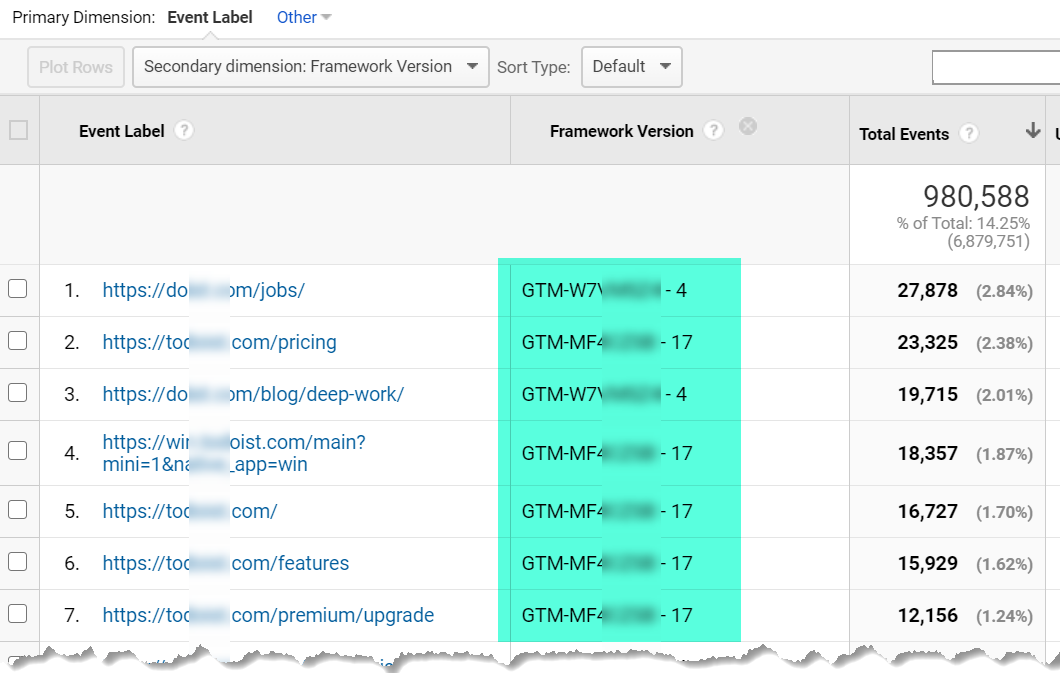Mastering the 'Secondary Dimension' in Google Analytics: Full Introduction
Mastering the 'Secondary Dimension' in Google Analytics: Full Introduction
Blog Article
Navigating the Midst of Secondary Dimension in Google Analytics: A Detailed Expedition on Its Functionality
In the world of electronic analytics, the complexities of data analysis typically hold the trick to opening important insights. Within the extensive toolkit of Google Analytics exists a function that functions as a concealed gem for those that look for a much deeper understanding of customer habits and web site performance. Second dimensions, though seemingly simple initially look, nurture a wealth of untapped prospective waiting to be taken advantage of. As we get started on this journey to discover the nuanced capability of additional measurements, we will uncover exactly how this feature can brighten patterns, reveal correlations, and eventually lead the way for educated decision-making in the electronic landscape.
Recognizing Secondary Measurements in Google Analytics

Recognizing how additional dimensions job is essential for leveraging the full power of Google Analytics. By incorporating main metrics with second dimensions, you can acquire beneficial insights that drive notified decision-making and optimization strategies.
Leveraging Second Measurements for Information Evaluation
Building upon the foundational understanding of just how secondary measurements boost data evaluation in Google Analytics, the application of these added layers of information ends up being critical in drawing out valuable insights for informed decision-making and optimization approaches. By leveraging secondary dimensions, analysts can dive deeper right into the efficiency metrics by including even more context to the key dimensions, therefore discovering surprise patterns and correlations that might not be apparent at very first look. This deeper level of analysis enables services to better comprehend individual actions, recognize patterns, and pinpoint locations for improvement.
Moreover, secondary measurements offer a more thorough view of the information, permitting for segmentation based on various parameters such as demographics, tools, web traffic sources, and extra. This division helps with an extra granular evaluation, enabling organizations to customize their approaches and projects to particular target market sections for boosted targeting and personalization. Essentially, the tactical use secondary measurements encourages companies to make data-driven choices that drive growth and success in the electronic landscape.
Advanced Techniques for Secondary Measurement Execution
Exploring elaborate approaches to harness the complete capacity of additional measurements in Google Analytics raises the deepness and sophistication of data analysis for tactical decision-making. One sophisticated method for carrying out second dimensions is using customized measurements. By defining customized dimensions, individuals can section information further to acquire even more particular insights right into user behavior, such as tracking communications with certain aspects on a website or checking the performance of a specific marketing project. An additional sophisticated technique is the use of regex (regular expressions) within second measurements. Regex enables more flexible and effective pattern matching, enabling individuals to produce complex filters for data analysis. Furthermore, incorporating additional measurements with sophisticated sections can provide much more granular understandings by applying numerous layers of segmentation to the data. This technique permits a much deeper understanding of individual behavior based upon numerous requirements simultaneously. Implementing these advanced strategies for additional dimensions in Google Analytics equips individuals to conduct much more innovative analysis and make data-driven decisions with precision.
Interpreting Insights Through Secondary Measurements

When analyzing understandings through second dimensions, it is important to consider the context of the information and just how different dimensions interact with each various other. For instance, understanding which specific traffic sources result in higher conversion rates or identifying which devices users prefer for making acquisitions can supply workable insights for optimizing advertising and marketing campaigns and enhancing general website efficiency. By very carefully checking out the information with secondary dimensions in mind, services can make educated choices that drive meaningful outcomes and boost their electronic presence.
Maximizing Performance With Secondary Measurements

One vital means to maximize performance with additional measurements is by segmenting information a lot more granularly. This permits you to isolate certain aspects that might be influencing your metrics and gain a much better understanding of what drives success or failing in your electronic efforts. By integrating secondary dimensions such as 'gadget classification' and 'touchdown page,' you can pinpoint which device kinds are most reliable for particular landing pages, allowing you to tailor your techniques accordingly.
In addition, utilizing additional dimensions can help you recognize trends, patterns, and relationships that might not appear when examining information with main measurements alone. This much deeper level of analysis can lead to more enlightened decision-making and inevitably boost the overall efficiency of your site or electronic marketing projects.
Conclusion
In verdict, second dimensions in Google Analytics play an essential function in improving information analysis you could look here and offering much deeper insights right into internet site performance. By using advanced techniques and interpreting the information efficiently, services can optimize their techniques and enhance general efficiency. Comprehending the capability of secondary dimensions is necessary for making notified decisions and driving success in the digital landscape.
By leveraging second measurements, experts can dig much deeper into the efficiency metrics by including even more context to the key measurements, hence discovering hidden patterns and connections that may not be noticeable at first look. One advanced strategy for executing additional measurements is the use of personalized measurements.Having actually understood advanced methods like custom-made dimensions and regex for second measurement implementation in Google Analytics, the following important action is interpreting the useful insights acquired through these sophisticated data segmentation approaches. Interpreting understandings through additional dimensions involves examining the connections in between the key and second measurements picked, discovering patterns, patterns, and relationships that might not be instantly evident when looking at the data in its entirety.When interpreting insights via second measurements, it is vital to consider the context of the information and just how different dimensions communicate with each other.
Report this page